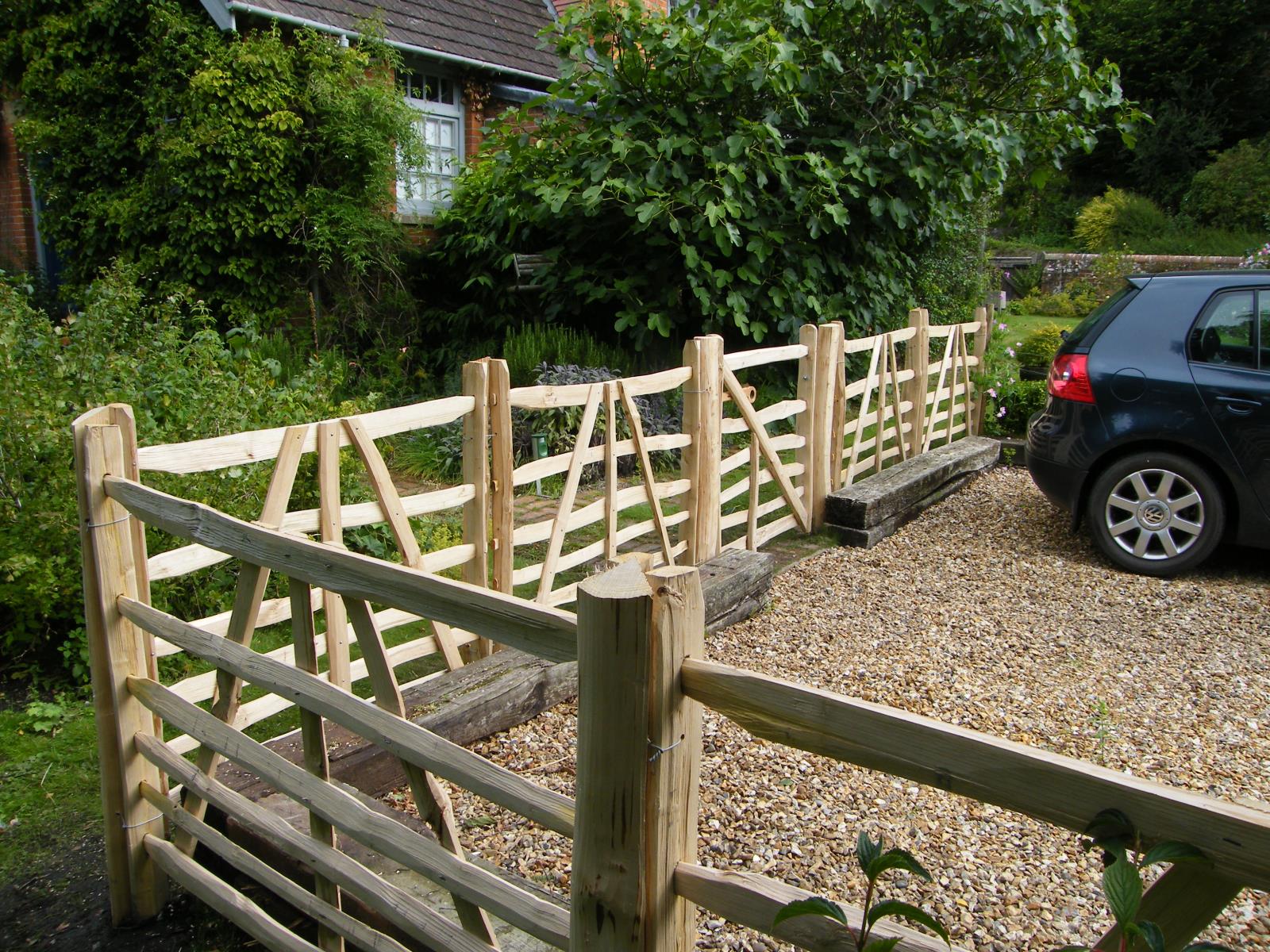Gate hurdles
Gate hurdles could be considered the forerunner of the electric fence. Traditionally, they were used as moveable fences to cordon off areas for sheep to feed on beet tops. Nowadays, however, most find their way into private gardens, museums of rural life and even on to the film sets of the BBC.
What are gate hurdles?
 In their original guise, gate hurdles were quite lightweight. Imagine having to move several hundred (four at a time!) over heavy winter soil and you can understand why. Nowadays they are mostly left in situ for the duration of their life, so I tend to make mine considerably heavier than of old. As a consequence, I would like to think that they will still be standing in 10-15 years’ time.
In their original guise, gate hurdles were quite lightweight. Imagine having to move several hundred (four at a time!) over heavy winter soil and you can understand why. Nowadays they are mostly left in situ for the duration of their life, so I tend to make mine considerably heavier than of old. As a consequence, I would like to think that they will still be standing in 10-15 years’ time.
Boundary fences
Gate hurdles make good boundary fences, but in recent years more and more people have used them to cordon off vegetable gardens from a variety of invaders, from the family labradors and chickens to wild deer from nearby woods.
Fruit training frames
Gate hurdles also act as very good training frames for espalier or fan training fruit trees. The small 2 foot x 1 foot hurdles make excellent individual supports for keeping unruly plants off lawn edges or paths. Once they’re no longer needed, it’s easy to move them to another spot in the garden, or to dry them and store them for another time.
Handmade fences
 Depending on the region, gate hurdles were traditionally made from a variety of wood: ash, willow or sweet chestnut. I favour the latter, partly for its easy workable qualities but also, more importantly, for its durablility outdoors. Chestnut has a very high tanin content, just like oak. In layman’s terms this means that it will last for a considerable time without the need for artificial preservatives, even when exposed to everything that the weather can throw at it.
Depending on the region, gate hurdles were traditionally made from a variety of wood: ash, willow or sweet chestnut. I favour the latter, partly for its easy workable qualities but also, more importantly, for its durablility outdoors. Chestnut has a very high tanin content, just like oak. In layman’s terms this means that it will last for a considerable time without the need for artificial preservatives, even when exposed to everything that the weather can throw at it.
All my gate hurdles are made from cleft sweet chestnut. I prefer to cut my own timber wherever possible, but due to the lack of good quality chestnut in Wiltshire I now buy it from a sustainable source in West Sussex. The chestnut is coppiced on a 20-30 year rotation by a family business, as part of the woodland management plan for the estate.
My gate hurdles are made in a largely traditional way (with a little help from a few modern appliances like an electric drill!). The sweet chestnut is cleft (ie. split) for important reasons; firstly, it’s much quicker than sawing it, and secondly, prising the fibres apart rather than cutting across them means that the individual clefts are stronger and more water-resistant.
Gate hurdle sizes and prices
Although there are recognised standard sizes for gate hurdles, like most things I make, my gate hurdles are all made to order and can easily be made to custom sizes as well. If you don’t see the size you want below, please contact me to discuss your needs and to obtain a quote.
Standard gate hurdle sizes:
2 foot x 1 foot = £30.00
3 foot x 1 foot = £40.00
6 foot x 2 foot = £65.00
6 foot x 3 foot = £80.00
6 foot x 4 foot = £90.00
6 foot x 5 foot = £100.00
6 foot x 6 foot = £110.00

